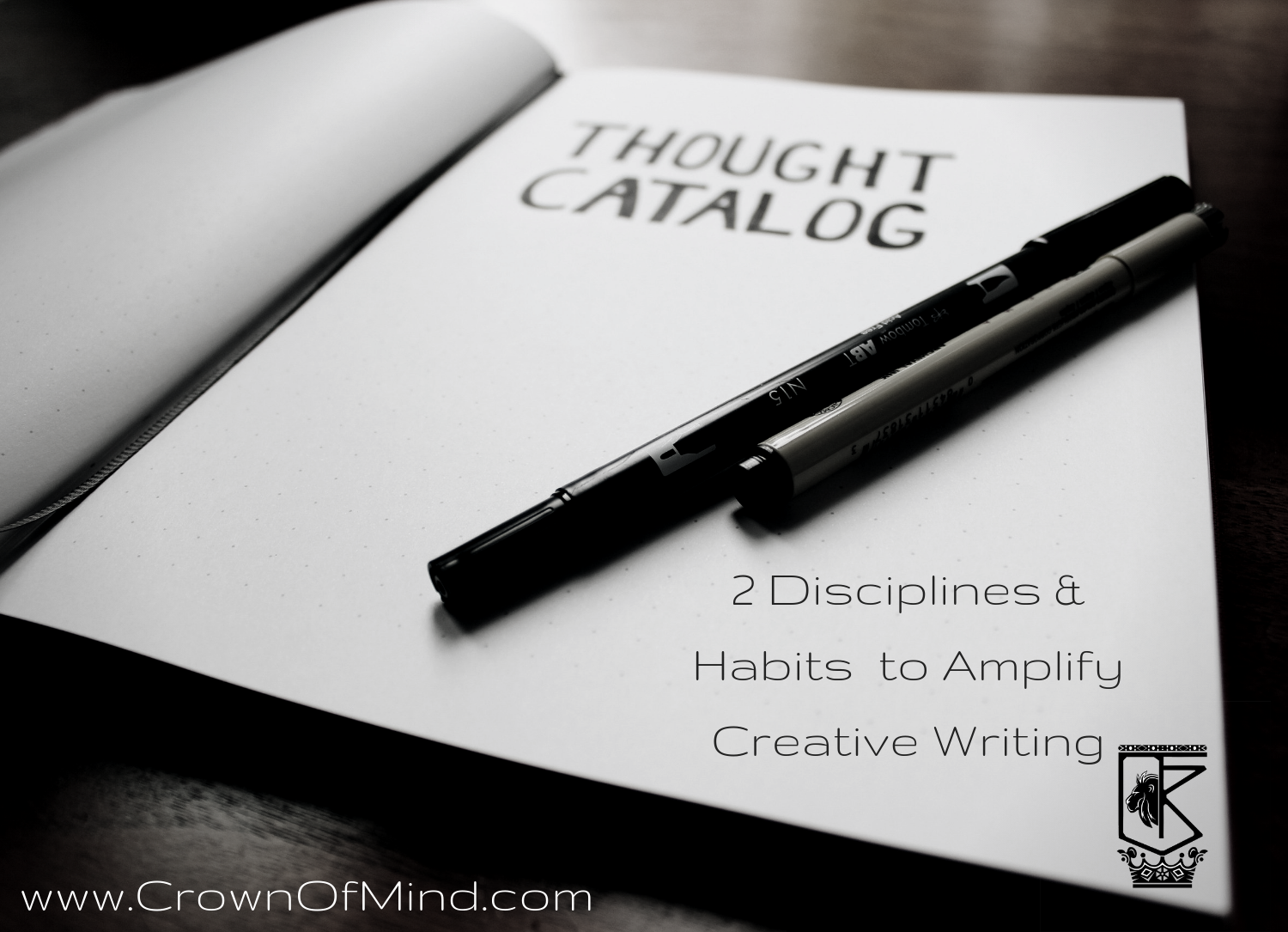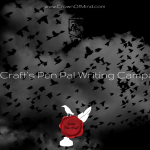If there’s one way to identify me by those who know me, it’s the journal and a pen. My peers would say that I’m constantly writing, and at this point may be used to my words spreading throughout Instagram, blog and everywhere else. Even so, few ask the question, “How do you write so much?” while having many other priorities?
The feedback I’ve received from conversations on this tended to be along the lines of, “Oh me? I’m not creative,” or “I’m not that creative.” Others experience what we tend to call “writer’s block,” an inhibiting experience that stalls ideas flowing to paper. Examining my own experience, I must say that I haven’t experienced writer’s block or and I’ve been writing since about age 11.
Early Writing Days
I picked up pencils mostly, opened a school notebook and started writing poems at first. Then it moved into amateur comics that no one read; I created them purely for my own storytelling amusement. This advanced into longer pieces, and then shifted into writing about my observations. Then I wrote my thoughts in journal style. Then I played with writing rap songs that I’d audio record them on cassette tapes acting as artists of the day (I do still have these in a bag). I even scripted multiple voices in the same songs using a Sony radio and the old Talk Boy.
Fast-forward years later into undergrad and experience within Student Government, I wrote numerous E-mails, updates, essays as president of the Taekwondo Club and yearbook Editor-in-Chief. My writing style refined and these skills enabled me to produce quite a large volume of personal writing: short stories, poems, essays, prose, observations, ideas totaling some 1300 pieces over the course of my bachelor’s degree tenure. To keep track of them, I turned each piece into a digital version, saved on hard drive and printed them out. Here’s an older picture of the work stacked in binders.
The output was a direct manifestation of my growing consciousness, of which I began to rapidly awaken at age 16.
Outside of this independent work, I took a total of 3 writing-specific formal courses during undergrad.
Current Writing
Today the writing output continues and it’s advanced into writing books, pamphlets, a blog, several websites and social media handles all without having to hire a content person to do the work for me.
Rather than seeing this as an unattainable feat by comparison, I hold the view that any person willing to put in the effort to cultivate a mind that’s primed to write can do so. It requires a combination of discipline to form habits, performance tracking and conscious openness to experience.
Let’s Amplify Your Creative Writing
Idea # 1
The first idea to adopt is that creative writing or writing in general involves taking a thought, condensing it into form and articulating that in words somewhere. So the source isn’t really the writing, it’s the capacity to have ideas first, and like any capacity it requires exercise just as one would go to the gym to develop strong thighs. The thigh muscles strengthen through targeted activation; our minds through the brain require strengthening through targeted activation.
Discipline #1
Commit to writing. This is critically important, because the mental commitment you make will change how you feel about the craft and elevate it to a level that matches your other priorities. Even if you don’t intend to write for professional purposes, this first step is vital. Sit in your chair, really think about this and make the statement, “I commit to writing.” A new relationship with the craft begins at this point. Then follow it up with a time period, “I commit to writing for 10 minutes each day.”
Start small; don’t go beyond 30 minutes at first because you’re building stamina muscles. When you accomplish 10 minutes for a week, then move into 15 minutes the next week, then 20 and so on. Over time you will establish a mental-brain connection that makes your focus on writing for this time simpler, and you will be strong-willed to resist opportunities that aim to distract you.
Habit #1
Write without judgment. This is traditionally called stream of consciousness. In this exercise, you write whatever comes to mind. Don’t evaluate. No editing. The sentences do not have to make sense or follow a logical flow. Your mind may travel from one concept to another. Write it all.
There may be some resistance to this due to the desire to edit if you’re not experienced, and that gives you evidence of how programmed the mind can be to always get things right the first time by society. While execution involves being accurate with results, experimentation is the seed of the creative process and the mind needs space to be able to flow without valuations. The valuations in this stage create inhibition, which stunts our right-brain-imaginative hemisphere.
Give yourself that 10-15 minutes and write whatever emerges. Then once you’re done you can revisit the work and see what can be useful. You may be surprised by just how many innovative ideas poured out from the deepest spaces in your imagination.
Idea #2
Writing doesn’t always have to involve word-to-paper in the beginning.
Ideas may arrive to me in spurts or over a period of days. This is why I keep the journal close; as soon as a concept forms, I make sure to capture it, whether that’s in the journal, using my phone’s audio app to voice record for writing later, the phone’s notes app, shorthand or mind maps in my field notes pad, a video of myself or a symbol on my hand. The main point is to capture the idea, and if you can do so at the moment it arrives you can always return to it in a writing form.
Here’s How to Take One Idea & Expand That Thing
As an example, I may voice record a topic. Then I’ll transcribe that topic, typing it in Microsoft Word. That becomes a blog post. That post will have links that connect to my other writing. One paragraph from that post may become an Instagram post, one I can adjust or expand on in a different way. That same post can be repurposed in my E-mail to the mailing list. The concept can then be expanded further in a different way on one of my websites. I can then post that concept in a different way on my LinkedIn. By the time I’m done amplifying one topic, it’s evolved to add value for readers on several of my writing mediums.
Discipline #2
Develop comfort with trusting your own ideas. There is value in receiving knowledge from other thought leaders out there, but if you always totally trust their words over your own innate intelligence you gradually dull your own ability to arrive at understanding.
Generally, business and success gurus tell you about their experiences and principles of how they arrived at their destinations. Unless they’re based on universal principles (like Napoleon Hill’s “Think & Grow Rich”), their models will not work perfectly for everyone. Instead of learning from a position of “I know nothing,” learn from the position of, “I am learning from this person to confirm the truth or falsehood of my personal experiences. Does this match up?” As you become more accustomed to trusting your own capacity to reason through ideas, your creative output will flow smoother.
Habit #3
Equip with writing tools at home and when mobile. Become a walking writing instrument. Buy a small journal to carry in your pocket. Keep a secondary notepad like field notes in a pouch. Make sure you have a few pens or pencils. Find your notes app or download one on your smart phone. Find your audio recording app on the smart phone. If you have a cell phone (amazing to note this difference today), invest in a separate voice recorder.
Then, start with observations in your day. Did you notice something outside? About the weather? A friend’s talk? On the way home? Something funny happen? Write it down.
Remember:
“No one can tell your story so tell it yourself. No one can write your story so write it yourself.” – Anonymous








[…] Learners can quicken their understanding of concepts by either personalizing it or embodying it, by giving it an expression (What do I look like when calm, strong, peaceful, energetic, etc.?). One technique includes writing. […]
[…] It’s important to remember that writing is really spelling, both in the sense of putting words and energy together. The letters combine to form syllables that form words we understand; there’s intention in those words and thus, they have meaning to us. They influence. […]
[…] The Q — a circle with a line running through it. The line is the symbol for direction, being willing to step outside of a loop that may no longer be viable. […]